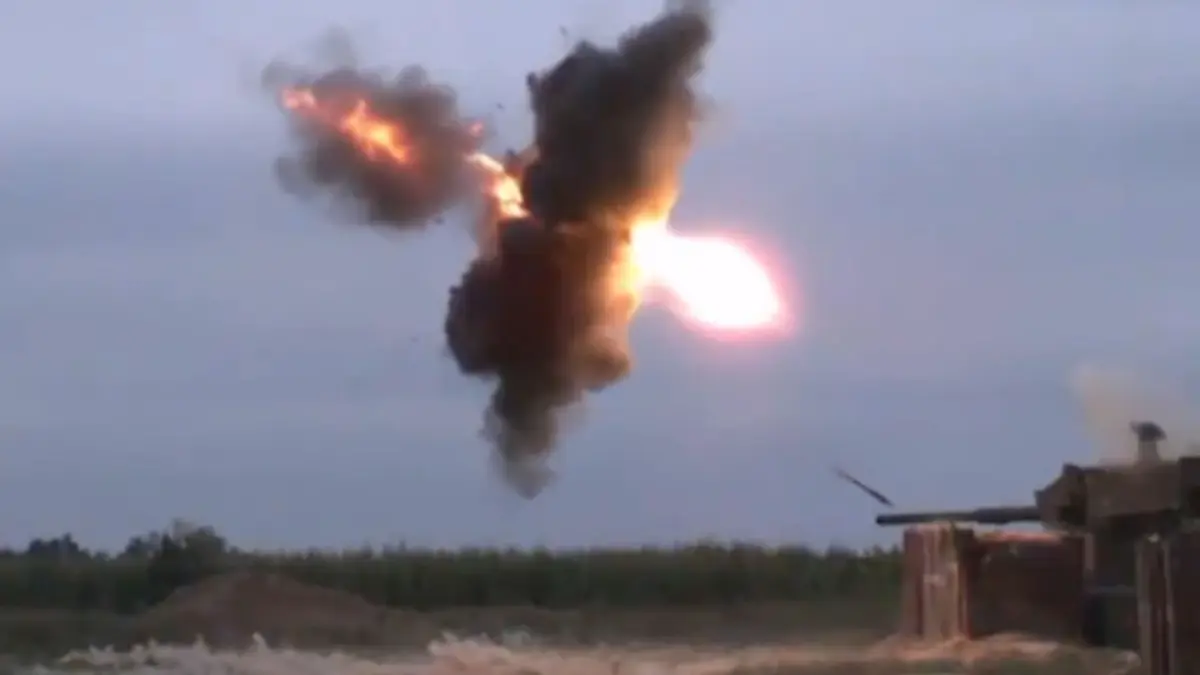China ha ensayado recientemente su nuevo Sistema de Protección Activa (APS) que prevé instalar en sus plataformas de combate blindadas. Denominado GL-6, se promociona como capaz de neutralizar amenazas tales como Misiles Atan Guiados (ATGM), cohetes antitanque tipo RPG’s y drones. Como ocurre con otros APS en servicio y probados en combate, el GL-6 es capaz de destruir solo aquellos drones o vectores con trayectoria relativamente predecible y con ángulos de ataque no muy elevados, como drones del tipo FPV y Loitering Munition, que constituyen la principal nueva amenaza, cuya neutralización aún no ha sido resuelta. China y muchos otros países, analizan las lecciones aprendidas en los recientes conflictos y el enorme impacto de estas nuevas y económicas amenazas emergentes como los UAS.
Chinese state media has published footage of the People’s Liberation Army (PLA) testing its latest tank Active Protection System (APS). Called the GL-6, the new system can be seen effortlessly knocking out anti-tank guided missiles [ATGMs] and drone- and man-fired rocket-propelled grenades [RPGs].
Moreover, the new APS appears equally adept at dealing with overhead and horizontal incoming threats. According to reports, the GL-6 can also counter multiple threats simultaneously.
However, the APS is not 100% effective, with noticeable damage seen on the demonstrator turret with dents to armor plates. However, the turret was not directly hit by projectiles or destroyed.
The footage does appear to lack one particularly growing threat to modern armor: kamikaze drones. Low-cost and highly effective against armor, drones of this nature are wreaking havoc in conflict zones like Ukraine.
China unveils new APS
If the footage is genuine, this shows that China has taken some profound lessons from recent conflicts, like Ukraine, to help protect its armored vehicles from the threats seen on the modern battlefield.
According to reports, the GL-6 comprises a mixture of radar, infrared, and optical sensors to detect incoming threats at long range, even in challenging environmental conditions such as heavy rain, smoke, or fog.
This setup enables the sensors to work collaboratively to continuously assess risks to the vehicle and maximize responsiveness to incoming threats automatically.
It is likely the GL-6 has similar capabilities, although it has not been publicly announced. Optical and infrared sensors also help such systems detect and track ow-thermal signature threats, including those launched by UAVs.
The most interesting innovation for China’s demonstrator APS is its ability to counter multiple incoming threats at the same time. Most other systems struggle with this scenario, especially when threats come from different angles.
According to reports, the GL-6 has been designed to be vehicle ambivalent, which can be fitted to various armored vehicles with little modification. This would include the PLA’s Type 99 Main Battle Tank and its ZBL-09 infantry fighting vehicle.
Yet to be tested in the heat of battle
Both are some of China’s most advanced pieces of military hardware and are constantly being updated with new upgrades, like the GL-6.
The footage is impressive, but it is yet to be seen how the system would perform in the real-world.
That said, it appears to be promising, albeit if untested. It certainly shows that China is taking threats like drones very seriously and is working hard to help future-proof its valuable military hardware where it can.
Looking to the future, it is very likely that other APS developments worldwide will focus heavily on countering drones and more traditional threats. Such developments will likely combine kinetic interception and electronic warfare (EW) capabilities to either kill outright or confuse incoming drones.
As it stands, the GL-6 offers a glimpse into China’s growing military capabilities. However, whether it can match the success of other APS systems in combat remains to be seen.


